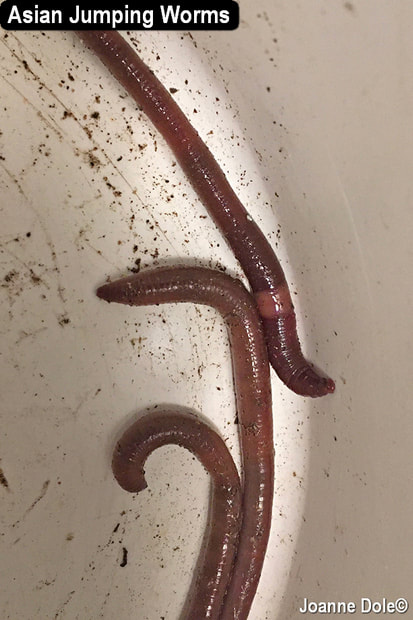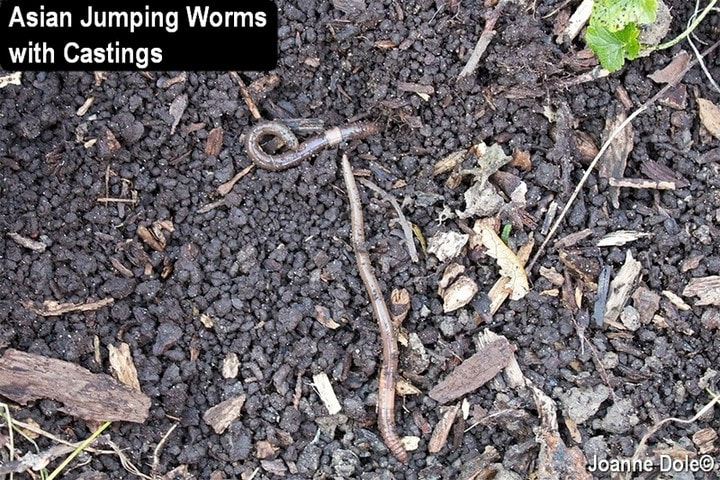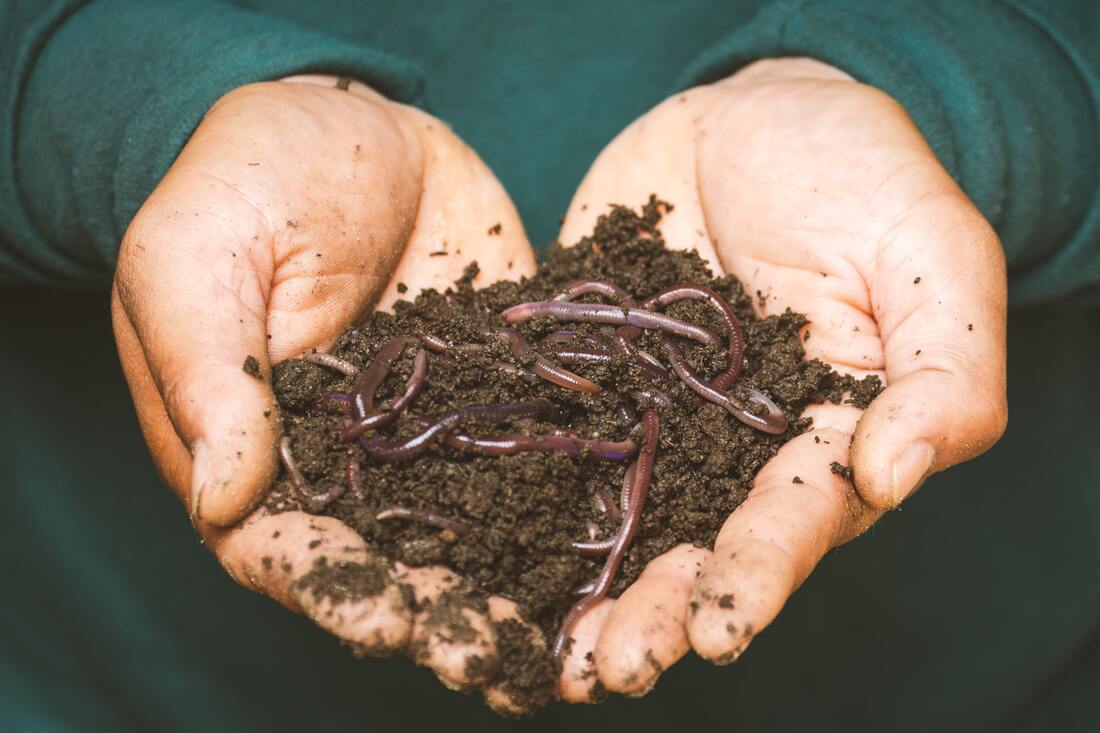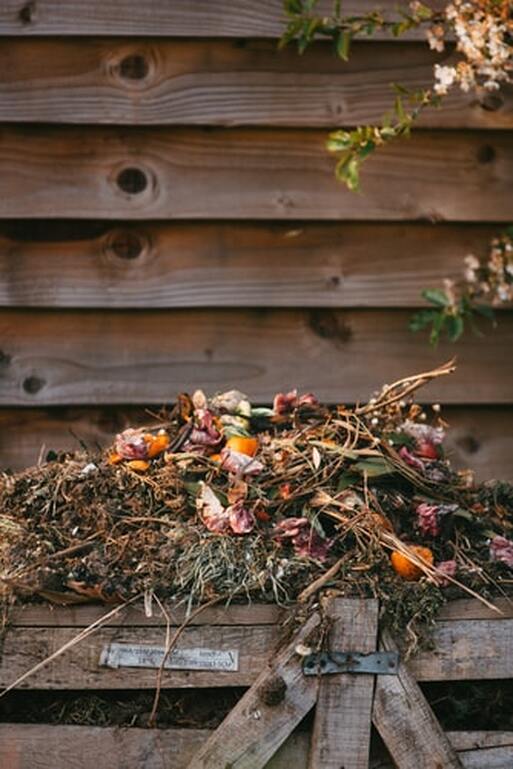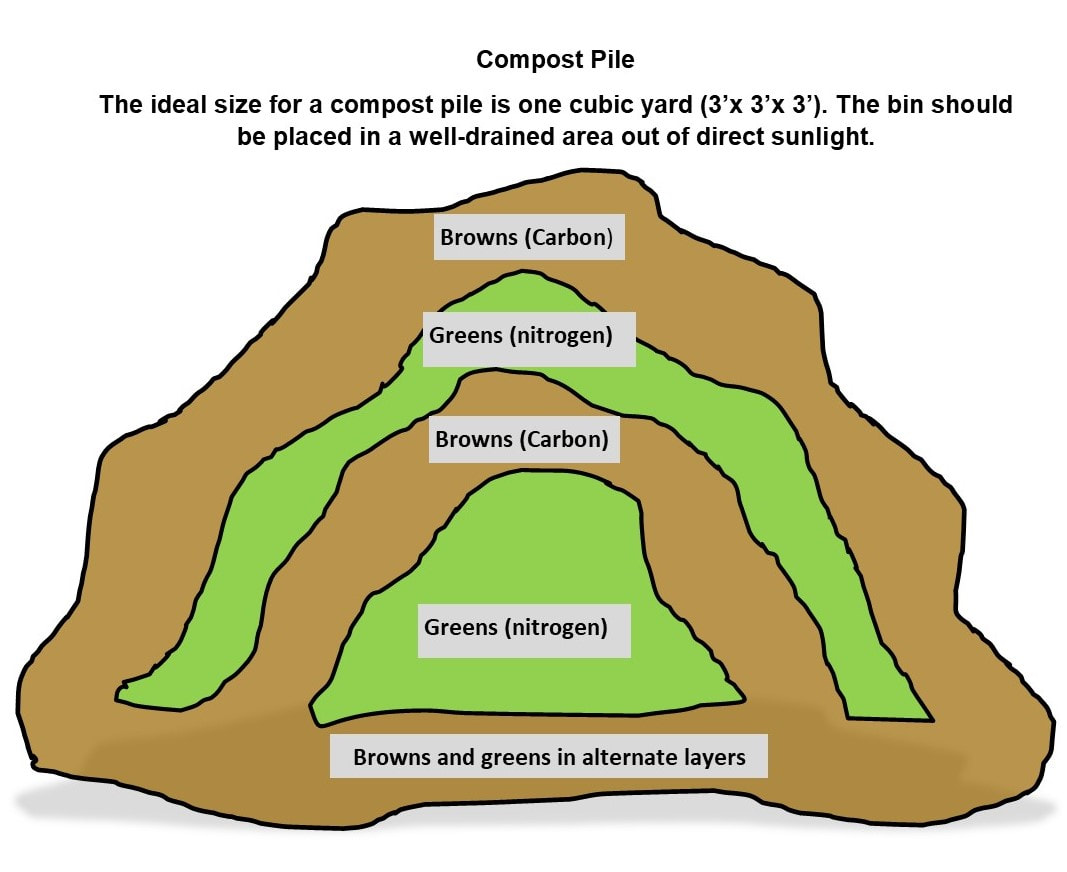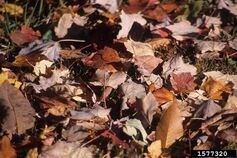|
As the common name suggests, Asian jumping worms (Amynthas spp.) seem to jump or thrash when handled. Little kids and worm lovers might be excited by a find like this in their lawn, garden or woodlot but finding this worm is not beneficial for the native environment. Why Jumping Worms Are A Problem Most worms that you find in the Midwest are European and Asian non-natives. Both of these non-native types alter the native environment, although Asian jumping worms do it at a more alarming rate. Jumping worms grow twice as fast, reproduce more quickly, and can work through organic debris much quicker than other worms. These invasive worms can severely damage the roots of plants in nurseries, gardens, forests, and turf. In areas of heavy infestation, native plants, microorganisms and animals such as salamanders may decline. Asian jumping worms are an annual species; the adults die after the first freeze. But the cocoons, which are about the size of a mustard seed and resemble small pieces of dirt, will survive the winter and hatch when temperatures reach 50°F for a consistent period. These self-fertilizing worms do not need mates and can produce cocoons on their own. Because populations can grow faster than the common European species, they may out-compete existing worm populations. Cocoons can be spread easily in potted plants, on landscaping equipment, mulch, tire treads, and even hiking boots. One telltale sign of an infestation is a very uniform, granular soil created from worm castings that are commonly said to look like coffee grounds. When you scratch the top layer of soil you will see the worms thrashing about with an erratic, snakelike movement. These worms, which can reach 6 inches in length, are much more active than European nightcrawlers. The Asian jumping worm can be found on the soil surface and in the leaf litter, making them easy to find. They can live anywhere from urban parks and suburban backyards to rural forests. You are also very likely to find them in compost piles and along roads. Earthworm species have a body part called the clitellum where egg cocoons are produced. The Asian jumping worm has a prominent clitellum that completely encircles the body, is milky white to light gray, and is flush with the body; the body looks metallic. On European nightcrawlers, the clitellum is raised or saddle-shaped and reddish-brown in color and does not wrap entirely around the body.
Management There is no magic control for these worms once they are found in soil. Asian jumping worms can now be found in the East, Mid-Atlantic, Midwest, and some Northwestern states. Prevention is the best way to keep them from being introduced to new areas. According to Wisconsin Department of Natural Resources, the following steps will reduce the spread of jumping worms:
Until effective research-based control strategies are developed to keep populations of this worm in check, gardeners should closely examine soil, compost, wood chips, and other soil amendments they move on or off their property. Learn how to identify these worms and educate your gardening friends and neighbors so they too can identify these worms. If you do find these worms on your property, never share plants or soil with other gardeners. For more questions regarding Warren County Soil and Water Conservation District programs and/or technical assistance on water or soil questions, visit http://warrenswcd.com or call, 513-695-1337.
0 Comments
It is hard to believe but our food waste and other organic materials such as paper and yard trimmings equate to nearly 55% of our total waste with food making up 20-30% of this total. When these items are in our landfills they breakdown and create a material called leachate, which is toxic and can pollute groundwater, surface water and soil. Vermicomposting, a process that relies on earthworms and microorganisms to break down organic matter and transform it into a product that can be used as a valuable soil amendment and source of plant nutrients, can help homeowners with their gardening efforts but also keeps organic materials from causing problems in the landfill! Vermicomposting is a way to get earthworms to work for you in a more organized way. You can become a worm farmer easily. North Carolina State University Extension is a leader in vermicomposting. Rhonda Sherman with North Carolina Extension, states that you need 4 items to begin worm farming.
Sometimes worm bins may have issues that arise over time. It is important to note that your bin should not:
It is very rewarding to grow your own veggies and to have showy flower beds! Utilizing compost is a great way to create thriving gardens and increase the porosity of your soil and give you the gardens you have always wanted! Through composting you enhance your garden’s ability to grow healthy plants while reducing your volume of trash.
Compost strengthens the soil food web, which is made-up of microscopic bacteria and fungi, along with earthworms, insects and many other life forms. Fungi form mutually rewarding partnerships with plant roots, making it possible for vegetables to feed themselves more efficiently. The addition of composted materials also improves soil physical properties, such as tilth, infiltration, drainage and water-holding capacity. Compost is decomposed organic matter. It can be made from leaf/grass debris, food scraps, manure from animals or other organic materials. It can be bought or you can make your own. The key is to ensure that it cannot be distinguished from what it once was! If your product still has distinguishable items (banana peels, manure clods, etc.) in it, key nutrients like nitrogen will be used to break down this material instead of being available to the plants. For example, if large quantities of uncomposted leaves are incorporated into the soil, microbes will compete with plants' roots for soil nitrogen during leaf decomposition. This competition for nitrogen can result in nitrogen deficiency and poor plant growth. Composting breaks down organic materials into an end product that increases the availability of essential minerals, such as potassium and phosphorous, to growing plants and reduces the competition for nitrogen. Composting at Home Composting at home is a great way to keep food wastes (non-animal) products out of our landfills and it is fairly easy to do! You need to make sure that you have a good ratio of “greens” or nitrogen and “browns” or carbons and is much like a recipe. It is referred to as the C/N ratio. The C/N ratio refers to the amount of carbon ( C ) and nitrogen ( N ) in materials that are added to a compost pile. The preferred C/N ratio is 25 to 30 parts carbon to 1 part nitrogen. Materials categorized as "brown," such as straw, contain more carbon than nitrogen and have higher C/N ratios than "green" materials such as fresh green grass. A compost pile will decompose faster at lower C/N ratios, with more green material, however, much of the nitrogen used by decomposers as energy will be lost more quickly and will need to be replenished. If too much brown material has been added to the pile, the pile will decompose slowly. Acceptable items to compost: "Green" materials
What not to include in the pile
For most efficient composting, use a pile that is between 3 feet cubed and 5 feet cubed (27-125 cu. ft.). This allows the center of the pile to heat up sufficiently to break down materials. Smaller piles can be made but will take longer to produce finished compost. Larger piles can be made by increasing the length of the pile but limiting the height and the depth to 5 feet tall by 5 feet deep; however, large piles are limited by a person’s ability to turn the materials. You may also want to have two piles, one for finished compost ready to use in the garden, and the other for unfinished compost. For questions regarding Warren County Soil and Water Conservation District programs and/or technical assistance on water or soil questions, visit http://warrenswcd.com or call, 513-695-1337. 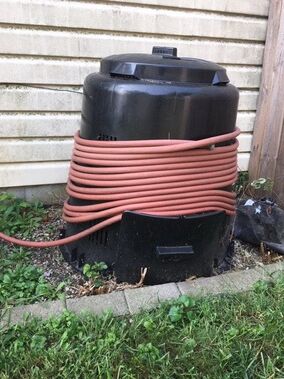 (Article taken from USEPA – Composting at Home (https://www.epa.gov/recycle/composting-home) and Ohio EPA Citizens Guide to Composting - https://epa.ohio.gov/portals/47/facts/citizens_guide_to_composting.pdf ) During this unusual and challenging year many of us have looked for new hobbies to fill our time. Composting is a hobby that is not only fun, but it is beneficial to the soil and your wallet! Composting is nature’s way of recycling leaves, grass clippings, kitchen scraps and other organic wastes by converting them into a valuable soil amendment called compost. By composting at home, you’ll enjoy the financial benefits of free soil enrichment, reduce the amount of solid wastes sent to landfills and conserve resources. Compost is organic material that can be added to soil to help plants grow. Food scraps and yard waste together currently make up more than 28 percent of what we throw away, and should be composted instead. Making compost keeps these materials out of landfills where they take up space and release methane, a potent greenhouse gas. Composting at home is very easy and practical. Once you learn the basics, you’ll be turning out lush piles of rich compost in short order. Using compost yields faster-growing, stronger plants. The chief value in using compost is the beneficial effect on soil structure. Incorporating compost into the soil improves aeration and drainage and makes the soil loose and easy to work. Compost increases the organic matter content of clay and sandy soils, allowing them to better retain water and nutrients. It also helps control erosion, proper pH balance and plant disease. All composting requires three basic ingredients:
What To Compost
What Not To Compost and Why
Selecting and Building your Composting Site
Compost can be made in just two or three weeks during the summer if the leaves and other materials are finely ground or shredded, turned frequently to provide good aeration and supplied with sufficient moisture and nitrogen.
For more questions regarding Warren County Soil and Water Conservation District programs and/or technical assistance on water or soil questions, visit http://warrenswcd.com or call, 513-695-1337. Photo Credit: Gerald Holmes, Strawberry Center, Cal Poly San Luis Obispo, Bugwood.org Fall is upon us! The beauty of the leaves is one of the favorite sights of the season. Once the leaves fall from their trees, a new chore can be added to the list – leaf raking! This can be back-breaking work if done by hand. According to the U.S. Environmental Protection Agency in 2017, leaves and other yard debris account for more than 13 percent of the nation’s solid waste—a whopping 35 million tons a year! Creatively and judiciously managing leaves by mulch mowing can save time and money in your fertilization effort, save your back, and keep leaves out of the landfill. Here are some simple guidelines and strategies to help you mulch mow your leaves.
Mulch mowing is just what it sounds like - chopping leaves into small pieces until it turns into a mulch like material that is returned to the lawn. Leaf debris naturally composts, allowing nutrients to return to the soil. Successfully mulching leaves into the lawn requires frequent mowing in the fall and possibly several passes during one mowing session. It is important to chop leaves adequately until they’re about the size of a dime so the leaf debris breaks down quickly. Specialized mulching mowers are available, and these mower types will also be beneficial year-round to mulch grass leaves into the lawn. According to K-State Extension, “mowing during the leaf season is not based on grass growth but on the rate at which leaves fall and collect on the lawn. Mow a thin layer, approximately 1” each time. This thin layer is chopped by the mower and then filters through the leaf blades where it works its way down to the soil.” Research has shown that a total of six inches of leaves can be successfully shredded and composted into the lawn and thus returned to the soil without causing damage. If you determine that your trees deliver more than 6 inches of leaves, it is best to mulch mow then bag. This can be done by first mowing without a bag and then mowing a second time with a bag in place. The second pass will enable leaves to be sucked up into the bag and take-up considerably less space thus allowing you to decrease the volume of leaves two to four-fold. The chopped leaves can be used as mulch for flower gardens and trees to help conserve moisture. Just remember not to use more than 2-3” of mulch around plants and steer clear of the crowns of plants to deter voles and rot. The leftover leaves can also be used in the compost pile. Another reason to utilize leaves in your landscape, according to the National Wildlife Federation, is that “Removing leaves also eliminates vital wildlife habitat. Critters ranging from turtles and toads to birds, mammals and invertebrates rely on leaf litter for food, shelter and nesting material. Many moth and butterfly caterpillars overwinter in fallen leaves before emerging in spring.” Leaves should not be dumped into local streams as the extra organic matter can lead to excessive nutrients into our bodies of water thus causing potential algae issues and lower water quality. Leaves that are left on the street can also clog storm drains which can result in flooding. For questions regarding Warren County Soil and Water Conservation District programs and/or technical assistance on water or soil questions, visit http://warrenswcd.com or call, 513-695-1337. Additional Resources:
|
Details
Warren County SWCD Staff BlogA blog to keep you informed on all the latest news at Warren County SWCD and in the conservation world. Archives
May 2024
Categories
All
|
|
|
Contact:PHONE: (513) 695 - 1337
EMAIL: [email protected] HOURS: Monday - Friday 7:30am - 4:00pm (except holidays) Connect:Warren County Soil & Water Conservation District Copyright © 2016
Warren SWCD Privacy Notice. Emails are serviced by Constant Contact. Constant Contact's Privacy Notice. |
